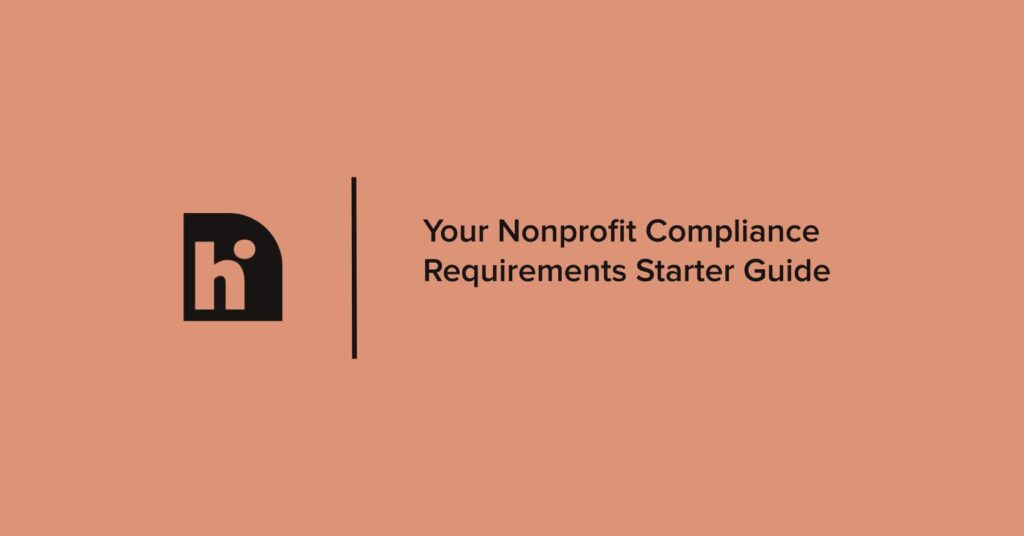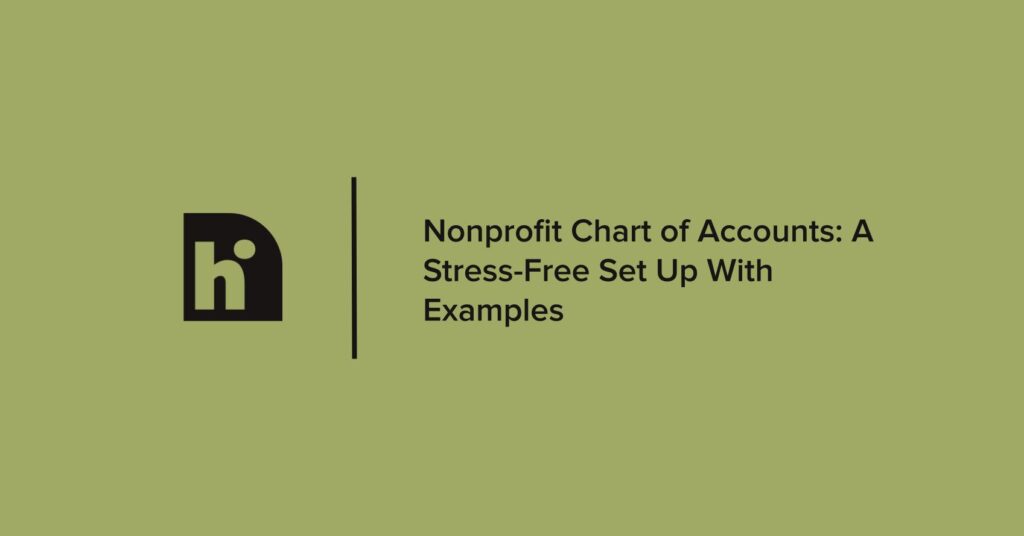The Nuances of Accounting for Nonprofits
Written by Amanda Bower | Published: September 5, 2023
Sign up for our newsletter to receive everything from accounting advice to notifications on new tax laws.

For those grinding in the nonprofit sector, they know financial resources are crucial to achieving their social impact and community betterment goals. And let’s be real; traditional accounting practices just don’t cut it. Nonprofits operate in a league of their own with a unique set of financial practices.
With over $2.6 trillion in revenue reported in the US alone and 10% of the workforce employed by nonprofits, it’s clear that proper financial management is a make-it-or-break-it factor. However, nonprofits are vulnerable to financial risk, including rising operating expenses, a shaky economy, and inadequate finances.
Bottom line: Nonprofits need to get their accounting practices right but they don’t have to do it alone.
The Intricacies of Nonprofit Accounting
Nonprofit organizations are the unsung heroes of our society, fighting tooth and nail to address social issues and provide critical services to those in need. Managing a nonprofit’s finances is no easy feat, requiring unique skills and knowledge to ensure financial transparency, accountability, and compliance with regulations.
Let’s delve into the intricacies of nonprofit accounting and provide some insights into best practices for managing the financial operations of a nonprofit organization.
Donations, Grants, Membership Fees, and Program Service Fees
If a nonprofit isn’t selling typical goods or services like a regular ole’ business, how is it earning its cash? The sources of a nonprofit’s revenue are perhaps one of the most significant intricacies and a key component of why nonprofit accounting is distinct from for-profit accounting.
Nonprofits typically gain revenue from several sources, including:
- Donations: Money given charitably, either by individuals or entities.
- Grants: A financial gift given to a nonprofit, which an entity can distribute. Grants do not need to be repaid and are often given by governments or corporations.
- Earned income: While nonprofits don’t exist to “sell,” they often do earn revenue through different avenues of earned income. This can include selling merchandise, membership or service fees, or fundraising events.
Understanding the different sources of nonprofit revenue is important because, in some instances, different types of revenue can only be used for certain things. We’ll discuss this in the next section.
Fund Accounting
Fund accounting is the primary method used for nonprofit accounting, and it is both functional and beneficial for nonprofits. Firstly, fund accounting separates financial resources into different groups (called funds).
They’re categorized by how they can be used (for example, if they’re restricted or not), and each fund operates separately. This means nonprofits need to track separate funds simultaneously and ensure they’re being used as intended.
Once a fund is opened, money can be added to it that meets the specifications of that certain fund. When transactions occur within a fund, they’re recorded. Funds can also have their own budgets and reporting processes.
What are some of the perks of fund accounting? It can be useful for financial accountability because documentation and records show how financial resources are being spent.
This is essential in the nonprofit space, where transparency with donors and other parties is often vital. Fund accounting is also an excellent way of organizing financial resources and ensuring they’re managed effectively.
Compliance
Nonprofits don’t just function differently from for-profit organizations: they also follow different laws and regulations. This is because nonprofits are often exempt from federal corporate taxes (if they file as a 501(c) nonprofit) and might have access to other financial benefits, such as public funding and grants.
What’s necessary to keep a nonprofit in compliance? Depending on the organization, you might need to file annual paperwork (such as with the IRS), prepare financial statements, ensure profits are used to advance the nonprofit’s purpose, and adhere to state and federal requirements to maintain tax-exempt status.
There also might be compliance requirements related to any licenses you have, as well as charitable solicitation. Many states have laws regarding soliciting funds for charity, and in many cases, organizations must register before soliciting and must maintain their status by filing periodic reports.
Reporting
There are many different reporting requirements that are necessary for nonprofits across several categories. Some reporting is essential for the operational level (such as maintaining tax-exempt status or securing grants), while other reporting might be central to functional aspects of the organization, such as maintaining donor relations.
When it comes to regulatory bodies, nonprofits need to be aware of reporting requirements from the IRS and the Financial Accounting Standards Board (FASB). The FASB is recognized as the “designated accounting standard setter” by the U.S. Securities and Exchange Commission, and their standards are relevant to organizations that follow Generally Accepted Accounting Principles (GAAP). It is often the case that federal grants require nonprofits to follow these principles.
It’s also possible that a nonprofit will execute other types of reporting aside from financial. For example, it’s usual for a nonprofit to also complete annual, donor, and board reports. These reports might not be legally mandated, but they can help foster and maintain trust, demonstrate the nonprofit’s impact and outline plans for the future.
Donor Management
Donors are often integral to nonprofit operations and are a primary source of revenue. But donors don’t usually just start knocking on the door with large checks in hand (although sometimes they might). Usually, managing donors is an extensive process that involves many ongoing steps.
Some components of donor management can include:
- Identifying and engaging with potential donors who align with the nonprofit’s mission and values.
- Communicating with donors and potential ones through different channels such as newsletters, emails, social media, and in-person events.
- Acknowledging and responding to donations and sending updates about the impact of contributions.
- Transparently communicating how funds are being used, sharing financial reports, and addressing questions or concerns. Nonprofits also might undergo due diligence if a donor wants to vet and evaluate the organization.
- Taking steps to retain existing donors.
- Adhere to ethical and legal fundraising practices regarding donor privacy and communication.
Board Relationships
A nonprofit’s board of directors consists of people who oversee and govern the organization and who make decisions regarding the organization’s strategy and mission. They provide oversight into a nonprofit’s operations and play a crucial role in its ability to achieve success.
Because of this, maintaining excellent board relationships is crucial. Board relationship management can include having clear, open lines of communication with board members, clearly defining their roles and responsibilities, and collaborating with the board when developing strategic plans. Ideally, the board will foster an environment where members feel empowered to share their insights and ideas and identify opportunities for feedback and evaluations.
Overhead Costs and Efficiency
Sure, nonprofits aren’t in the business of making money for themselves, but they still have to keep the lights on. Nonprofits need to ensure their overhead costs are covered and that they’re reinvesting funds into the organization, contributing to efficiency.
What do we mean by that? There are several “tiers” of costs that a nonprofit might incur. Some of these are mission-critical and can’t wait even one day to resolve (like keeping the lights on, for example). But other costs might seem more “optional,” but can still contribute to an overall more efficient operation.
Let’s say everyone is working on computers that are 15 years old and which crash whenever three internet tabs are open at once. These computers are likely contributing to organizational inefficiencies and might cost the organization money in the long run.
Nonprofits ultimately need to master spend management so that money is spent in the most effective way possible.
Grant Management and Accountability
Grants are funds that can be awarded for many types of programs and purposes. But in order to receive them, there are usually certain criteria in place, including certain requirements for eligibility and how the grant will be spent. When a grant is received, it’s paramount that it’s managed appropriately and that there’s accountability regarding the grant.
This might require managing the grant funds when they arrive, ensuring they’re spent on proper causes and purposes, and tracking the impact of it. There might be reporting needs that are necessary throughout the grant period and evaluations that are required at the end of it.
Impact Measurement
Impact measurement refers to nonprofits assessing the effectiveness and outcomes of their programs and initiatives. It requires regularly collecting data related to a nonprofit’s operations, and analyzing results to determine if the organization is actually achieving its goals.
Impact measurement involves clearly defining the goals of a program or initiative and outlining the metrics associated with success. Then, nonprofits need to collect relevant data (which can come from surveys, focus groups, or other data sources) and monitor progress continuously.
After data is collected and analyzed, conclusions can be drawn, which outline the impact of the nonprofit and its programs and initiatives. Findings can be shared and can also be used as a tool for launching improvements.
Nonprofit Accounting Is Complex and Nuanced
Did you happen to get all that? If it sounds like a lot, we get it: accounting for nonprofits isn’t for the faint of heart. But that’s why you’re in the nonprofit space in the first place. You’re not afraid of overcoming a few challenges to positively impact those around you.
If your nonprofit accounting is a source of stress, let us give you a hand. Here at hiline, we offer finance-as-a-service designed specifically to help nonprofits with their accounting needs. We offer bookkeeping, finance, tax and HR, and payroll services designed to help you run better.
Let us take care of your accounting, so you can take care of your organization. Contact us today to get started.
Share this article
Read Similar Articles

Accounting
Your Nonprofit Compliance Requirements Starter Guide

Accounting
Nonprofit Chart of Accounts: A Stress-Free Set Up With Examples
